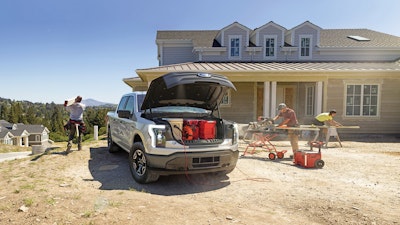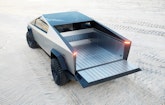
Among many innovations, the Rivian R1T provides a secure storage space at the front of the bed with access from both sides of the truck.
I suspect a lot of contractors who install septic systems for a living have been skeptical about the idea of electric work trucks. It has been easy to remain a naysayer about all-electric vehicles as the automakers promise but fail to deliver a stout unit that would serve an onsite...








